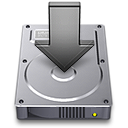Raspberry Pi
Setup:
Step 1: Prepare the SD card
Download the Raspbian OS image from (Raspbian at raspberrypi.com)
then uncompressed the image downloaded and then extracted the img file to my Micro SD card using win32diskimager
from Mar 2020 Or download Raspberry Pi Imager from (Raspberry Pi Imager at raspberrypi.com)
Headless setup
Tip: Enable SSH
If you want to SSH into the Pi without hooking it up to a display,
you create a empty file in the boot folder on the SD card name ssh without any extention
this will allow you ssh into the Pi provide the Pi has access to your network
 shh
shh
Tip: Enable WiFi (if your Pi has buildt in Wi-Fi or a usb Wi-Fi adapter)
Create a file called wpa_supplicant.conf
This configuration file that will allow you to pre-configure the WiFi credentials.
The Pi will on boot copy these settings and use this as the default configuration file.
In this file, place the following content:
country="your country code"
ctrl_interface=DIR=/var/run/wpa_supplicant GROUP=netdev
update_config=1
network={
ssid="your WIFI_SSID"
scan_ssid=1
psk="your WIFI_PASSWORD"
key_mgmt=WPA-PSK
}
Make shure the WiFi credentials are correct.
 wpa_supplicant.conf
wpa_supplicant.conf
When that is done put the Micro SD card / SD card into the Pi and conected the Pi to the powersupply.
Then boot it up and log in with your user name and password.
Step 2: 1st boot - Initial configuration
raspi-config is the Raspberry Pi configuration tool
Here you change the default password as the first thing (recomended for security reason: as the password raspberry is know to all).
After a password change expand your filsystem to take up the entire SD card (wana reboot after doing such).
Step 3: 2nd Boot - Update
apt-get update is used to update the package index files on the system, which contain information about available packages and their versions. It downloads the most recent package information from the sources listed in the "/etc/apt/sources.list" file that contains your sources list.
It is advised to run apt-get update frequently in order to ensure that the system is aware of the latest available package updates.
apt-get upgrade is used to update installed packages to the most recent version. To identify which packages require an upgrade, "apt-get update" is used to gather the necessary information. The "apt-get upgrade" program downloads and installs the most recent packages, replacing any earlier versions that were already on your system.
Step 4: Firmware Update !!!NOT A THING TO DO NORMALY !!!
This is a special feature for Raspberry Pi. It allows updating the firware in an easy and fully automated way. Obviously please make sure your system is well updated before running the rpi-update.
In some Raspberry Pi distributions the rpi-update is bundled, in some not. If not found, you can easily download by running the following command.
sudo apt-get install rpi-update
Step 5: Reboot
You need to reboot when finished.
Maintenance autoremove
Over time and several updates, applications and packages installed will also install and share many libraries. Removing any application, the dependencies will stay on the system. This is where autoremove comes in. It will remove any and all dependencies no longer in use by anything on the system.
code area